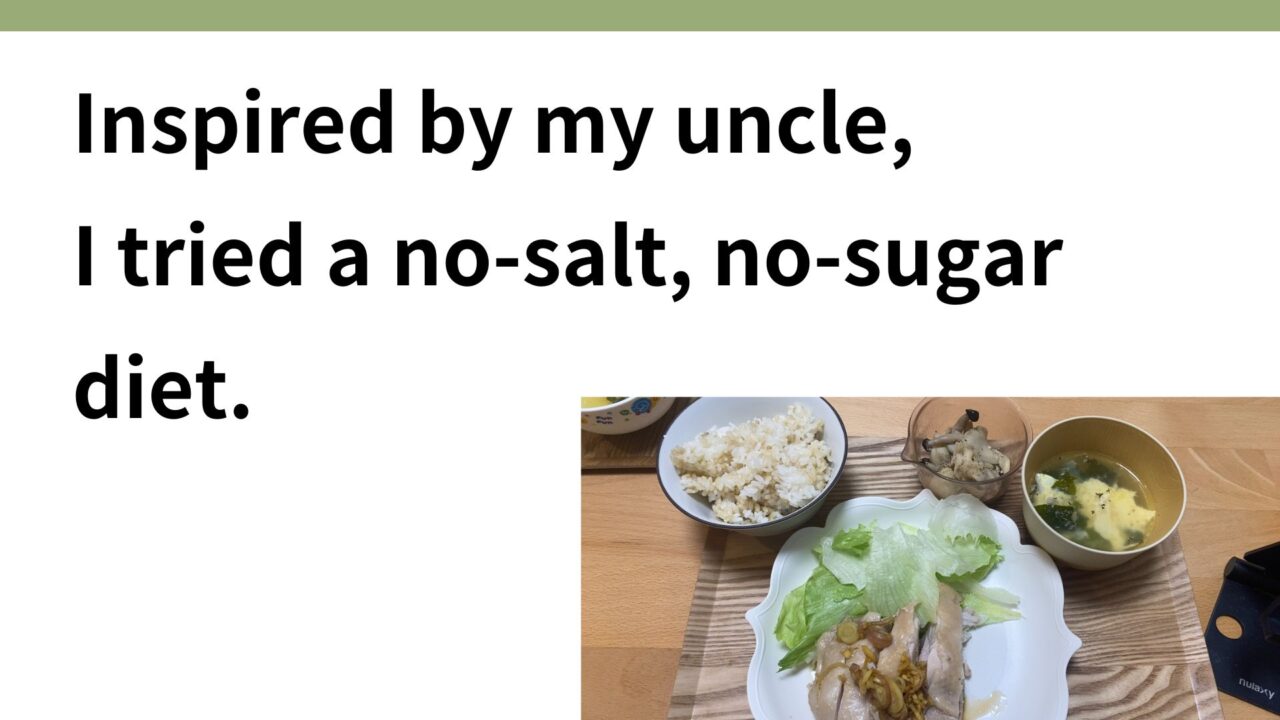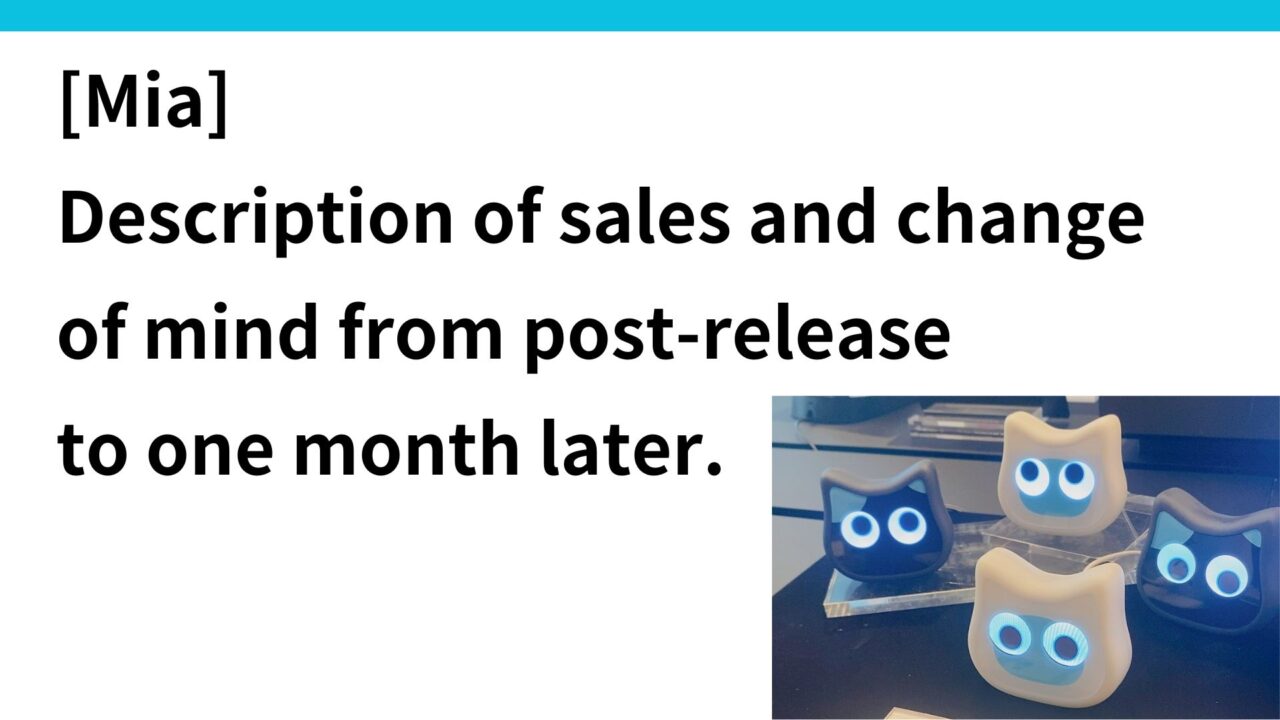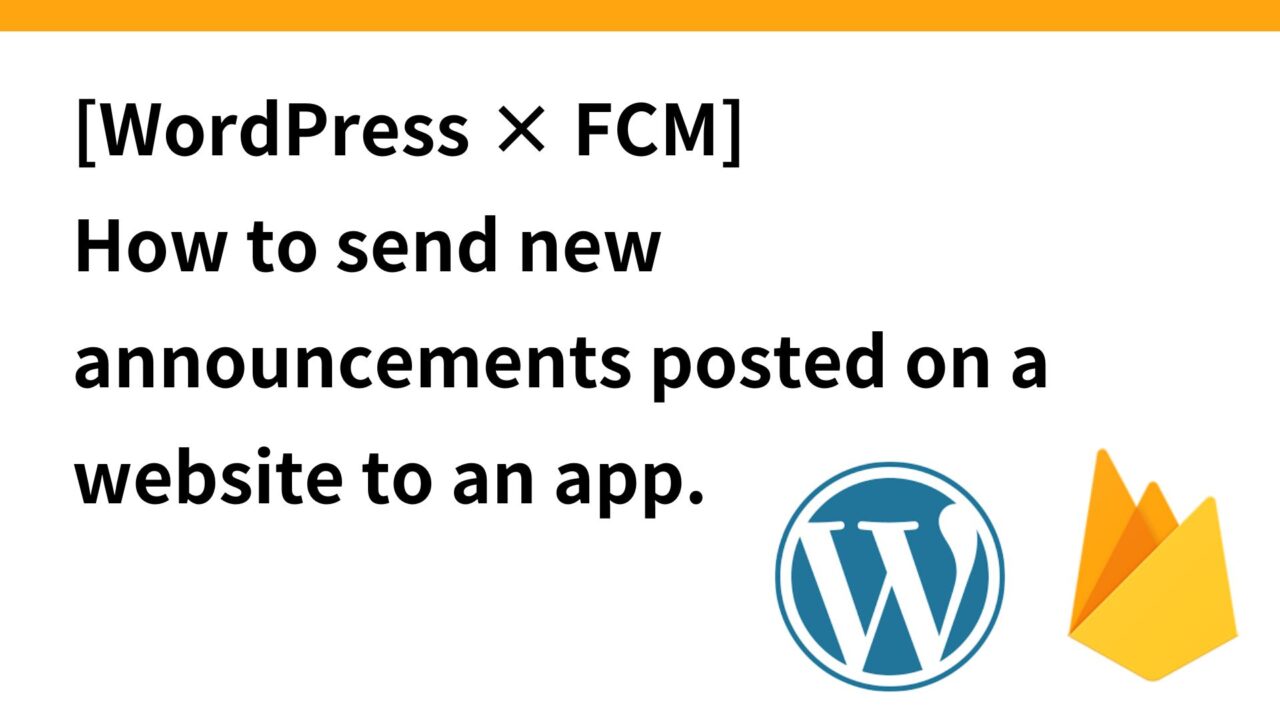Introduction.
The other day, I had a chance to meet my uncle and talk with him to give him an update on what’s going on.
My uncle, Shoichiro Nakao, is a cardiologist who, after studying at Harvard Medical School, discovered Cardiac Fabry Disease in 1995 and published his discovery in the medical journal NEJM. He is probably the only person in Japan who has followed this strict no-salt, no-sugar diet.
He is a nerd in the best sense of the word, as he is very thorough in his use of no salt and no sugar when eating out, and he uses himself as a test subject for 24-hour urine storage. I feel that we are similar in our thoroughness when we decide to do something, even though our interests are different (I may have inherited some of this.).
What is a salt-free, sugar-free diet?
Literally, a diet with no salt and no sugar at all.
For more information, my uncle is currently contributing an article to Jiji Medical titled “The Road to No Salt and No Sugar – A World Without Hypertension and Diabetes”.
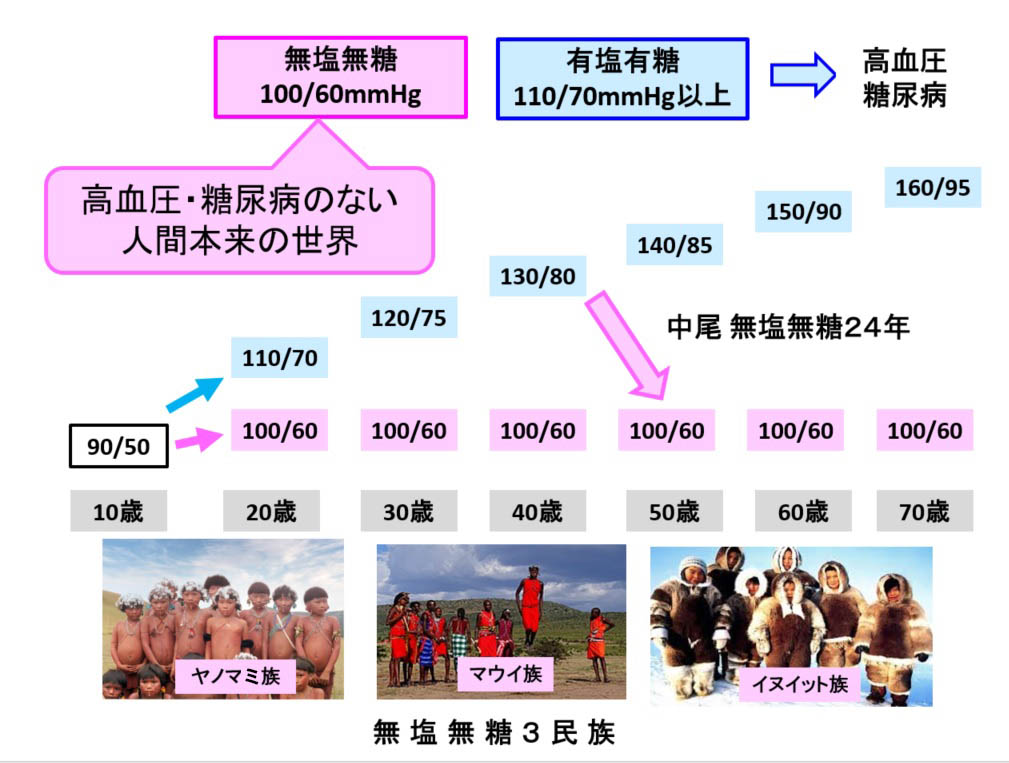
Incidentally, my blood pressure result for this year’s physical examination was 113/78 mmHg, so I feel I am on track for the Japanese average in my 30s. If I continue with my current eating habits, my blood pressure will probably increase step by step with age.
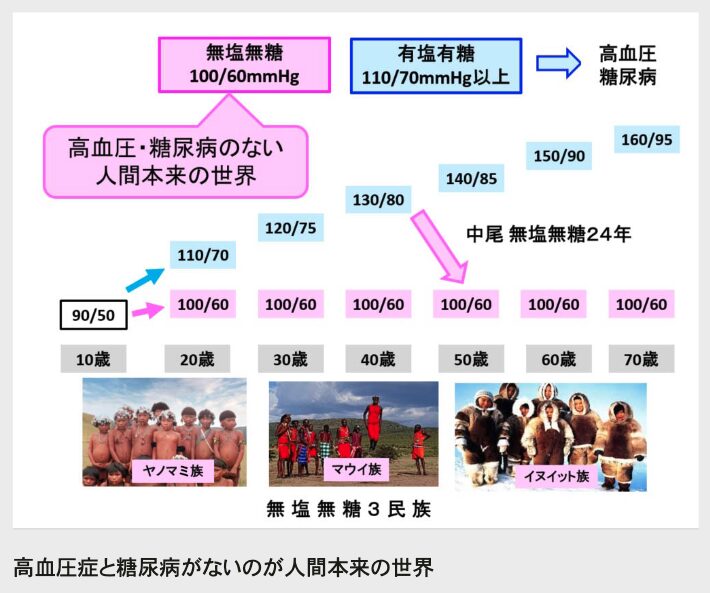
Am I, for better or worse? I have little interest in food, and since I eat a complete nutritional diet called Huel every morning, and since I quit drinking four years ago to maintain my work performance and have not suffered particularly, I thought I might be able to practice a salt-free, sugar-free diet and decided to give it a try.
Incidentally, it is said that the unsalted, unsweetened version actually tastes better because it brings out the true flavors of the ingredients, which were drowned out by the seasonings.
Can I take natural sugars in food?
As for this one, YES.
The fructose in fruits and natural sugars in foodstuffs are allowed without restriction.
Their diet is the same as that of the Yanomami people in the interior of the Amazon, whose main food is grain (cassava) and fruit (bananas).
Avoid consuming sugary snacks, condiments and processed foods that contain sugar.
Get advice on seasoning selection.
I thought, where do I start? I thought, ‘What seasonings should I use? I thought, ‘No miso or soy sauce,’ so I immediately emailed my uncle with the question and received a detailed reply.
Dashi, curry powder, pepper, ponzu (unsalted), mirin (additive-free), pepper, garlic and ginger (grated)
They are all good.
The following is a list of seasonings used in the Nakao family so far.
- Dashi soup stock packets, sesame seeds (ground and roasted),
- Black vinegar, balsamic vinegar, wine vinegar, sake (13%)
- Basil, organo, thyme, cinnamon, lemon juice
- Canned tomatoes, tomatoes, grilled seaweed, shiso,
Mirin is not used.
Tomatoes are also used in tomato casseroles.
Homemade furikake is also good. Eat it over rice, salads, meat, etc.
Since there were no good soy sauces available and only one expensive spray-on unsalted soy sauce, I quickly compromised and bought a low-sodium soy sauce.
Buy sesame oil here
The hardest part was giving up Alfort and Korean seaweed.
I go to Costco once a month and buy a lot of Alfort and Korean seaweed. I used to eat about 3 pieces of Alfort a day when I drink coffee to replenish sugar, and I used to sprinkle Korean seaweed on rice, but now I have to say goodbye to it because it is a mass of sugar and salt. I had just bought it…
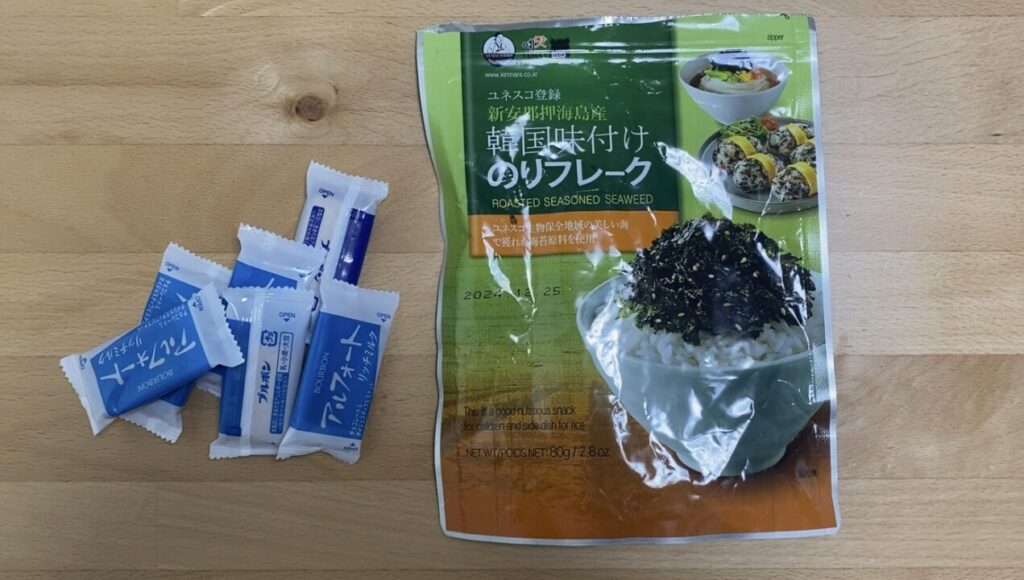
Also, I like natto and eat it often, but since they went without soy sauce, it became dry natto.
Actually cook it.
My family originally didn’t dress the salad, so it was fine as it was, but the rest of the salad looked like this.
After trying it, I personally feel that I can continue to eat it at all.
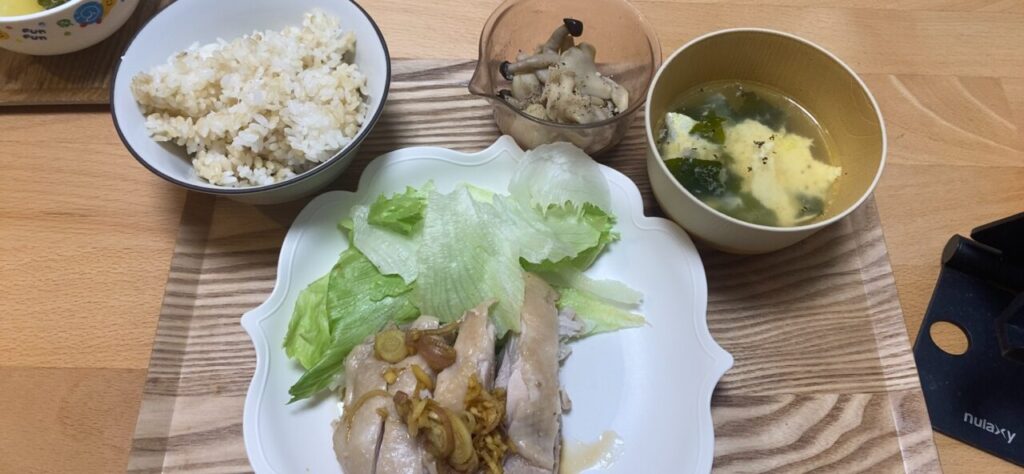
It’s been about 3 days since I started now, and the difference is that as a snack, I don’t have a stomach ache and I’m more hungry before the next meal.
I’m told that if I continue for a month, I’ll get used to it and the regular meals will seem more flavorful, so I’m going to continue for a month anyway.
When I was an outpatient internist, I used to see patients with hypertension.
Japanese people, on average, consume 10g of salt per day, which is a lot. For those with high blood pressure, up to 6g per day is good. To give you an idea, this is about the same as diluting your current miso soup by half with hot water.
I was explaining to him, and he said, “That’s pretty thin, isn’t it?” But I never thought I would see the day when I would put it into practice.
